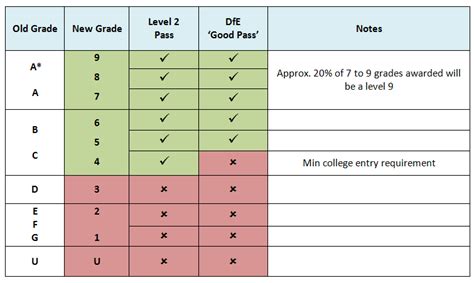In the realm of grading and assessment, understanding the correlation between numerical scores and their corresponding letter grades is crucial. While grading systems may vary across different educational institutions and subject areas, the general conversion scale provides a framework for interpreting numerical scores. This article aims to provide a comprehensive guide to understanding what grade is 8/10, delving into the intricacies of grading systems and offering practical tips for students to improve their academic performance.

Understanding Grading Systems
Grading systems are designed to evaluate students’ academic performance and provide a standardized method for assessing their comprehension of the subject matter. These systems typically utilize a range of numerical scores (e.g., 0-100) or letter grades (e.g., A-F) to represent students’ achievement levels. The specific grading scale employed by an educational institution or subject matter is typically outlined in the course syllabus or instructor guidelines.
Numerical Scores and Letter Grades
In most grading systems, numerical scores are converted into letter grades. The exact conversion scale used may vary, but the following table provides a general overview of the most common letter grades and their corresponding numerical ranges:
| Letter Grade | Numerical Range |
|---|---|
| A | 90-100 |
| B | 80-89 |
| C | 70-79 |
| D | 60-69 |
| F | 0-59 |
What Grade is 8/10?
Based on the aforementioned conversion scale, a score of 8/10 would typically correspond to a letter grade of B. This indicates that the student has demonstrated a strong understanding of the subject matter and has performed well in assessments.
Factors Influencing Grading
It is important to note that grades are not solely determined by numerical scores. Other factors that may influence grading include:
- Class participation and attendance
- Homework completion and quality
- Quizzes and tests
- Projects and presentations
- Teacher discretion
Tips for Improving Grades
Students seeking to improve their grades can consider the following strategies:
- Attend class regularly and participate actively in discussions.
- Complete all homework assignments on time and to the best of your ability.
- Study consistently and thoroughly for quizzes and tests.
- Seek help from teachers, tutors, or classmates when needed.
- Utilize resources such as textbooks, online materials, and study groups.
- Manage time effectively and prioritize academic tasks.
- Set realistic goals and track your progress.
Common Mistakes to Avoid
To prevent negatively impacting their grades, students should strive to avoid the following common mistakes:
- Procrastinating on assignments and studying.
- Spending excessive time on non-academic activities.
- Not seeking clarification from instructors when needed.
- Missing classes or submitting incomplete assignments.
- Relying solely on memorization without understanding concepts.
Conclusion
Understanding the relationship between numerical scores and letter grades is essential for students to gauge their academic performance. A score of 8/10 typically corresponds to a letter grade of B, indicating a strong comprehension of the subject matter. Students can improve their grades by implementing effective strategies and avoiding common pitfalls. By engaging actively in their studies and seeking support when needed, students can achieve their academic goals and reach their full potential.
